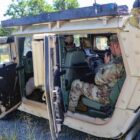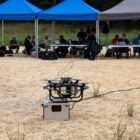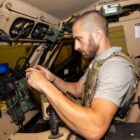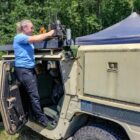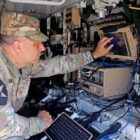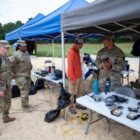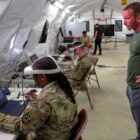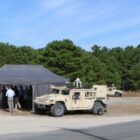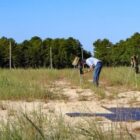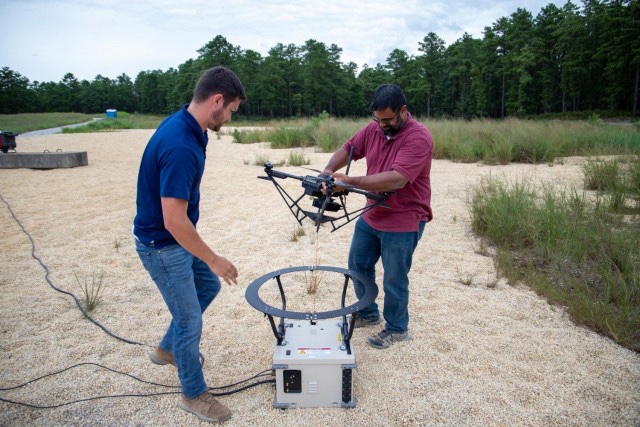
JOINT BASE McGUIRE-DIX-LAKEHURST, N.J. — The Army completed its annual capstone Network Modernization Experiment, or NetModX, after 10 weeks of experimentation spanning 62 technologies.
Across three locations in New Jersey and Maryland, the Army’s Command, Control, Communications, Computers, Cyber, Intelligence, Surveillance and Reconnaissance Center and partner organizations experimented with a broad spectrum of network-related capabilities in an operationally realistic, threat-informed environment. The C5ISR Center is an element of the Combat Capabilities Development Command.
Because of the Army network’s vast reach, NetModX 23 encompassed 17 focus areas and five modernization priorities: Future Vertical Lift, Long-Range Precision Fires, Network, Next Generation Combat Vehicle and Soldier Lethality.
“As an enabler for multiple Army technologies, the network and its performance in multiple dimensions becomes critical to overall mission success,” said Joe Saldiveri, NetModX 23 lead strategic planner.
NetModX 23 featured projects leveraging a live, virtual and constructive environment that enables experimentation in a distributed manner. LVC assists the NetModX project management team to provide an all-inclusive service by combining real and simulated capabilities to simulate technologies under experimentation. The LVC environment fills in gaps where real systems are too expensive or too scarce to include.
“The C5ISR Center offers a critical service to the C5ISR community by providing the environments and engineering expertise to experiment and inform complex C5ISR integration decisions. LVC is a tool that enables us to answer more complex questions with greater fidelity and more efficiency. We continue to invest and work with our partners in building out our LVC capabilities — to ensure we are pushing the state-of-the-art boundaries,” said Seth Spoenlein, assistant director for system integration.
As part of NetModX, the C5ISR Center routinely partners with a fellow Army R&D organization, DEVCOM Analysis Center, to create an operationally relevant experimentation environment. This environment is vital to experimentation as it exposes emerging technologies to realistic threats for greater learning.
In addition to the work of Army scientists and engineers, the event included Soldier participation from the 75th Innovation Command, 101st Airborne Division and Fires Capabilities Development and Integration Directorate. This allows real-time Soldier feedback on how emergent technologies affect mission threads and performance within those threads.
“Soldier participation in NetModX allows technology developers to gain insights into how Soldiers would interact with the technology in an operational setting, providing valuable lessons across a broad range of technology readiness levels,” said Noah Weston, chief of C5ISR Center’s Strategic Experimentation Office.
New this year was Innovation Week, a two-week extension of NetModX with a focus on sensor-to-shooter experimentation, augmented by LVC capabilities to enhance realism. The intent was to explore high-risk, high-reward experimentation, to push the boundaries of learning by exercising a common sensor-to-shooter mission thread using uncommon technologies and network architectures.
Innovation Week resulted in a series of firsts for the Army network enterprise, providing a basis of knowledge for further exploration, Weston said.
“Leveraging initiatives such as Innovation Week, the Army can discover potential leap-ahead technologies or architectures that are distinct advantages over currently deployed systems. Innovation Week is focused on reducing risk for both our internal science and technology programs and, more importantly, our transition partners. It provided an operationally relevant “safe to fail” environment to conduct systems of systems experimentation,” he said.
By Dan Lafontaine, DEVCOM C5ISR Center Public Affairs
Some photos by James Lee, RJ Regars, and John Tang, DEVCOM C5ISR Center


